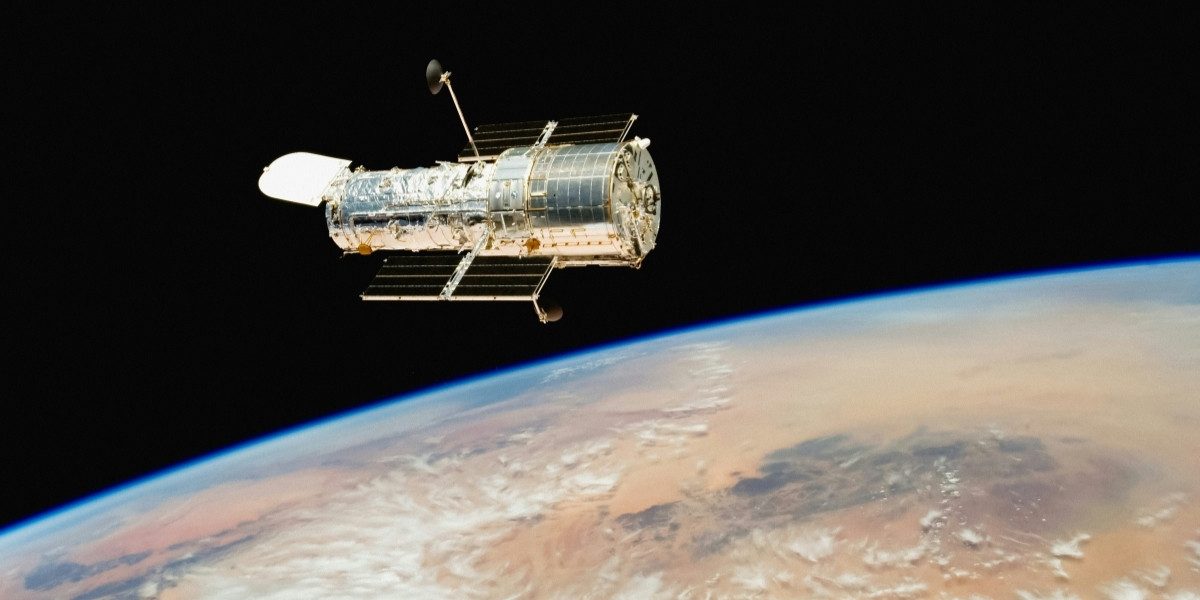What Is the Hubble Space Telescope and Its Role in Astronomy?
Launched in 1990, the Hubble Space Telescope (HST) has become one of the most iconic and influential instruments in the history of space exploration. Positioned outside the Earth’s atmosphere, Hubble has provided astronomers with unparalleled views of the universe, free from the distortions caused by atmospheric interference. This groundbreaking space-based observatory has not only captured breathtaking images of distant galaxies, nebulae, and star-forming regions, but it has also played a pivotal role in answering some of the universe’s most profound questions.
With its ability to observe celestial objects across a wide range of wavelengths, from ultraviolet to near-infrared, Hubble has expanded our understanding of the cosmos in ways that were once thought to be impossible. The telescope’s contributions span from the birth of stars to the expansion of the universe, cementing its place as a cornerstone of modern astronomy.
Read Also: How Short-Form Videos Are Shaping the Future of Social Media
What Are Some of Hubble’s Most Groundbreaking Discoveries?
Hubble’s decades of service have resulted in numerous groundbreaking discoveries that have revolutionized our understanding of space. Here are some of its most significant contributions:
The Accelerating Expansion of the Universe: One of Hubble’s most profound discoveries came from its observations of distant galaxies, which revealed that the universe is not only expanding but doing so at an accelerating rate. This observation led to the discovery of dark energy, a mysterious force driving this accelerated expansion. The 1998 discovery by astronomers Saul Perlmutter, Brian P. Schmidt, and Adam G. Riess earned them the Nobel Prize in Physics in 2011.
Mapping the Universe’s Rate of Expansion: Hubble provided key data to refine the calculation of the Hubble constant, which measures the rate at which the universe is expanding. This information is essential for determining the age of the universe and understanding its ultimate fate. Hubble’s precise measurements of distant galaxies helped solve long-standing debates about the universe’s age, narrowing the estimate to about 13.8 billion years.
Deep Space Exploration: One of Hubble’s most ambitious observations is the Hubble Deep Field (HDF), which provided the most detailed image of the universe ever captured at the time. The HDF revealed thousands of galaxies, some of which are as far as 13 billion light-years away, offering a glimpse of the universe when it was just a fraction of its current age. This discovery opened the door to understanding galaxy formation and the early stages of the universe.
The Birth and Death of Stars: Hubble’s ability to observe nebulae and star-forming regions has significantly advanced our understanding of how stars are born and how they die. Notable images like those of the Eagle Nebula and the Crab Nebula have revealed intricate details of star birth, while its observations of supernova remnants and white dwarf stars have deepened our understanding of stellar evolution.
Exoplanet Atmospheres: Hubble has also contributed to the discovery of exoplanets, planets orbiting stars outside our solar system. It has helped astronomers study the atmospheres of these exoplanets, providing early insights into their compositions and climates, a crucial step toward the search for life beyond Earth.
How Has Hubble Sustained Its Mission for Over Three Decades?
What sets the Hubble Space Telescope apart from other space observatories is not just its groundbreaking discoveries, but also its technological durability and its ability to remain relevant even decades after its launch. The telescope’s sustained success is a testament to the incredible engineering and innovations that have kept it operational for over 30 years.
Servicing Missions: One of the key factors in Hubble’s longevity is its servicing missions, carried out by NASA’s space shuttles. These missions allowed astronauts to visit Hubble in orbit, making repairs, upgrading components, and replacing instruments. Most notably, the 1993 mission fixed a flaw in Hubble’s main mirror, which had been affecting the clarity of its images. Subsequent servicing missions in 1997, 1999, 2002, and 2009 kept the telescope’s instruments updated and operational, extending its life far beyond its initial design.
Technological Innovations: Over the years, Hubble has benefited from continuous technological upgrades. New instruments and detectors have been added to improve its imaging capabilities. The addition of infrared instruments has allowed Hubble to observe objects that are obscured by dust or located too far away to be seen in visible light. The telescope has also been adapted to work in conjunction with other observatories, including the Chandra X-ray Observatory and the Spitzer Space Telescope, allowing for multi-wavelength observations of cosmic phenomena.
Global Collaboration: Hubble’s success is also the result of international collaboration. NASA, the European Space Agency (ESA), and the Canadian Space Agency (CSA) have all contributed to Hubble’s design, maintenance, and upgrades, making it a symbol of international cooperation in space exploration.
What Is the Future of Space-Based Observations After Hubble?
While Hubble’s contributions are monumental, it is not the only space telescope on the horizon. As technology advances, the next generation of space observatories will build on Hubble’s achievements and address questions that remain unanswered. The most notable of these is the James Webb Space Telescope (JWST), set to launch in 2022. JWST is designed to observe the universe in infrared wavelengths, allowing it to see through dust clouds and explore regions that Hubble cannot reach.
However, despite the arrival of JWST and other future missions like the Nancy Grace Roman Space Telescope, Hubble’s legacy will continue to play a crucial role in space-based observation. Hubble’s ability to work across multiple wavelengths and its ability to capture stunning images of distant objects will continue to serve as a benchmark for future space telescopes.
The collaboration between Hubble and new telescopes will open up new frontiers in our understanding of the universe, allowing astronomers to study cosmic phenomena from multiple angles. This combination of legacy and innovation will ensure that space-based observations remain at the forefront of scientific discovery for years to come.
Hubble’s Cultural and Educational Impact
Beyond its scientific contributions, the Hubble Space Telescope has had a profound cultural impact. The stunning images it has produced have inspired generations of scientists, educators, and the public, creating a sense of awe and wonder about the universe. These images have brought the cosmos closer to people, fueling interest in astronomy and science as a whole.
Hubble’s legacy also extends to STEM education, where its discoveries and images have been used in classrooms around the world to engage students and foster interest in science, technology, engineering, and mathematics. Hubble’s public outreach programs and educational resources have made science more accessible and exciting, sparking curiosity about the universe and encouraging future generations of scientists and engineers.
Read Also: Washington Education System: A Guide for Students and Parents
Hubble’s Enduring Legacy in the Cosmos
The Hubble Space Telescope has left an indelible mark on the field of astronomy, providing humanity with a clearer understanding of the cosmos. From its groundbreaking discoveries about the universe’s expansion to its iconic images of distant galaxies and nebulae, Hubble has not only expanded our scientific knowledge but also inspired millions around the world.
As we look ahead to the next era of space-based observations, Hubble’s legacy will continue to guide future missions and shape our understanding of the universe. Its technological innovations, scientific contributions, and cultural impact make it one of the most influential scientific instruments in history, and its story is far from over.






